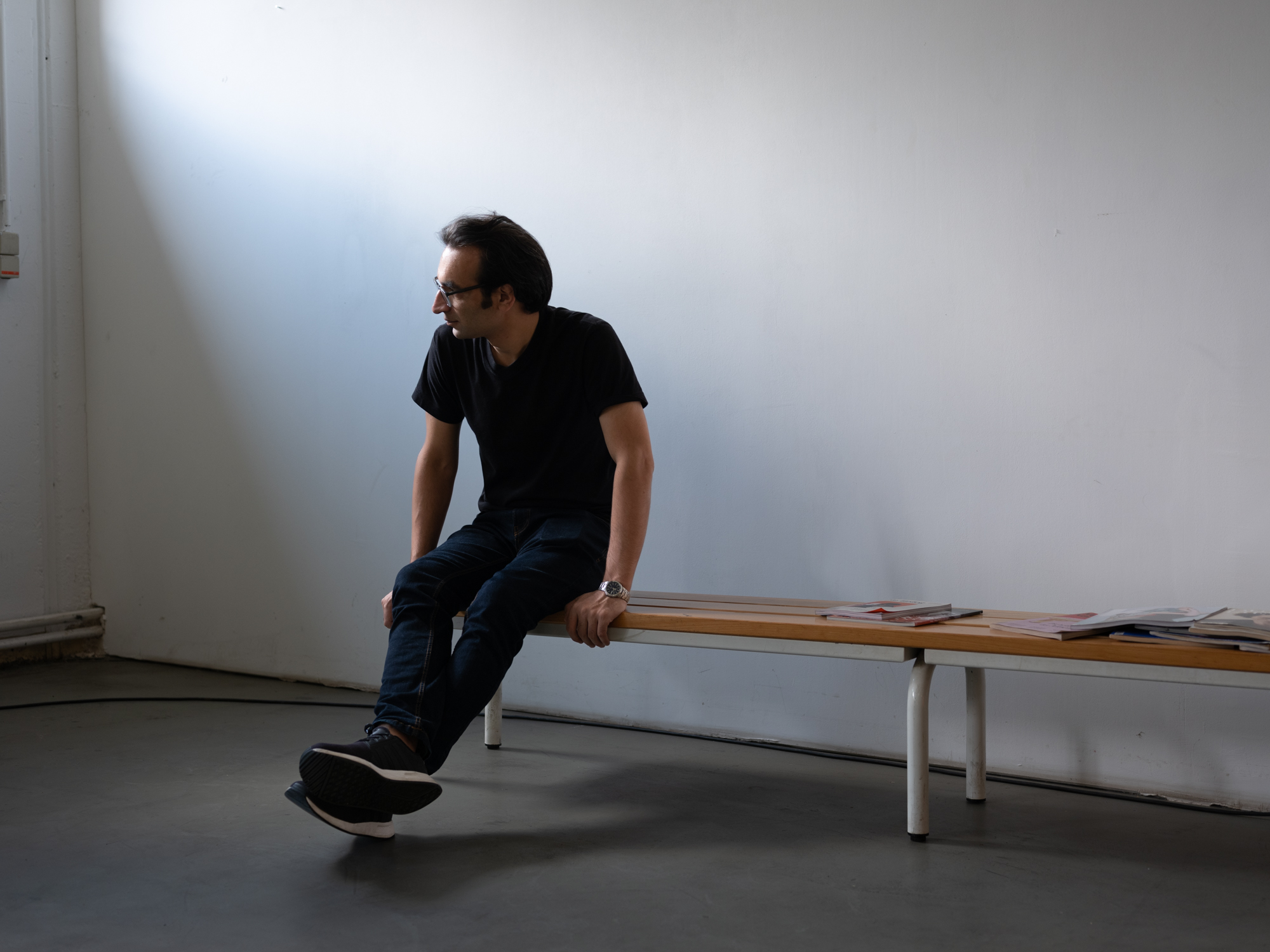India, Visual Arts, 2023
Malik
Sajad

Visual artist, writer, and animator Malik Sajad records life’s overwhelming complexities. He tells stories in words and images, a pairing that brings strength to his narrative.
Sajad’s predilection for responding to the world visually became clear early on through streams of images, often depicting his birthplace of Srinagar in Kashmir. When brought to the attention of editors of the English-language daily, Greater Kashmir, Sajad became the paper’s teenage staff member, accompanying senior reporters to sketch aspects of reported stories. Along the way he learned the basic rules of documentation. He also helped his father with carving complicated motifs onto wooden blocks used as decorative elements in traditional furniture. An everlasting interest in woodcut techniques ensued, especially as used by German Expressionists. These were the foundational experiences that allowed Sajad to visualize a future where he could fuse his art and investigative skills to tell stories.
An avid reader, Sajad was captivated by writers such as Richard Wright, Toni Morrison, or Saadat Hasan Manto. He also studied works of visual artists spanning generations – he sees both Kathe Kollwitz and Jean-Michel Basquiat as sources of inspiration. Knowledge of diverse disciplines – film, visual arts, literature, or animation – proved essential in creating Sajad’s own aesthetic within the realm of visual storytelling.
While developing his first graphic novel Sajad studied German Expressionist prints at the Brooklyn Museum. The visual and conceptual richness of the works lead to a realization that the narrative and testimonial quality of each piece transcends the time of their making. This experience affirmed Sajad’s dedication to the Expressionists’ aesthetics in his own subsequent work.
Sajad’s graphic novel Munnu: a Boy from Kashmir, documents growing up through the eyes of a seven-year-old boy. Deeply autobiographical, it depicts often seemingly “irrelevant” events of family life in a larger context. Using anthropomorphism – transforming the characters into the endangered red stags of Kashmir – allowed him to approach some of the difficult aspects of coexistence in a less charged way. While depicting his family Sajad also conducted interviews in isolated parts of Kashmir, giving voice to the powerless. In his multifaceted research, he explores the far reaches of the medium of storytelling, from the gathering of material to transforming it into grave testimonials.
In the present landscape of cultural and political polarization visual storytelling allows for the sharing of diverse positions and facilitates less confrontational approaches. While contemplating individual frames of a graphic novel, we also aim to understand other opinions, thus aiding cross-cultural communication.
Working on new books, short reports, and/or single works of art, Sajad engages both textual and visual devices to meditate on the human condition amidst ongoing world disputes. In the process, he points toward the possibility of resolution, or at least of finding some semblance of common ground. In our present tumultuous world, the importance of such works cannot be overestimated.
Text: Charlotta Kotik
artist website: maliksajad.com

